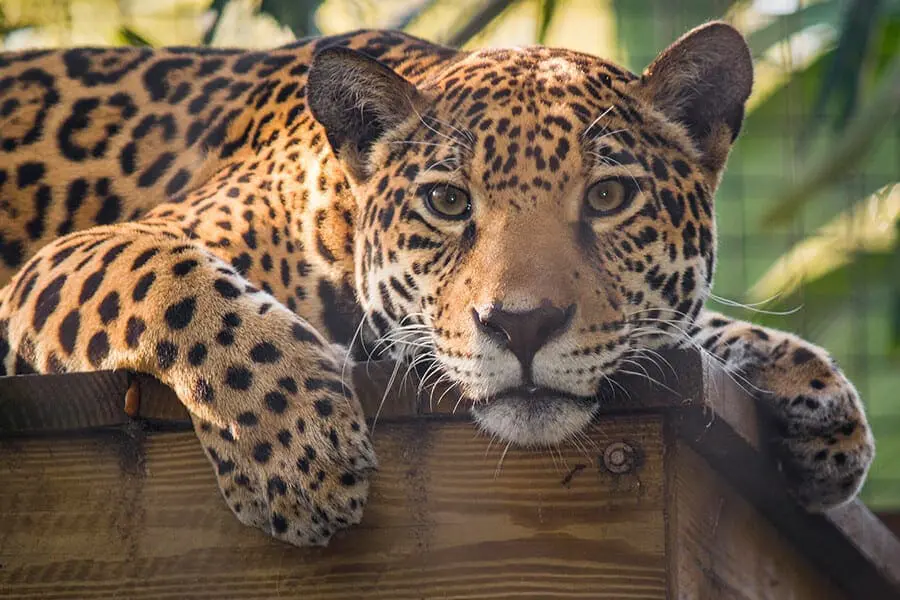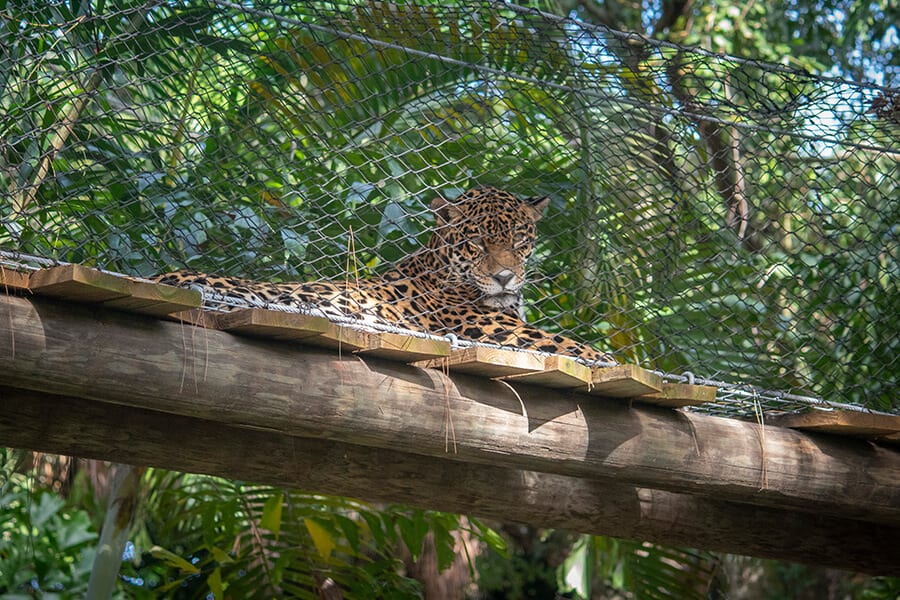

Safe travels, Philly!
Big changes are underway for our three jaguars! Three-year-old female Philomena, affectionately known as “Philly” by her keepers, will soon move to the AZA-accredited Memphis Zoo as part of the jaguar Species Survival Plan. She’s been paired with a male there and will hopefully produce cubs in the coming years.
Philly and her sister Jeannie were born here on January 27, 2015 to mom Masaya and dad Mulac. Jeannie moved to BREC’s Baton Rouge Zoo back in 2016, where she is now thriving.
“Philly is like a ‘mini-me’ of Mulac in terms of looks and personality,” says curator Lauren Hinson. “She’s very laid-back and trusting. We’ll miss her a lot, but we know she’s going to a great place.”
Philly is currently living behind the scenes at the Harris Animal Care Center, where she has access to the crate that will be used for her transport. Familiarization with the crate will reduce the amount of stress she experiences while traveling.
Masaya has been given access to Philly’s enclosure and overhead tunnel, which was built in 2016 as the first phase of our jaguar habitat expansion. Mulac is now the full-time occupant of the original jaguar exhibit, which he and Masaya rotated in and out of before Philly moved behind the scenes.
If you’ve walked through La Selva lately, you may have noticed a third jaguar enclosure and accompanying tunnel under construction. Mulac will occupy this space when it is completed in the next few weeks, and the original habitat will be left empty for upgrades and repairs.

Masaya enjoys her new vantage point.
When all is said and done, Mulac will likely return to the original habitat, which best suits his needs as an older cat, and Masaya will have access to the two newer “nodes” and tunnels.
Adult jaguars are solitary animals, which means they will only occupy the same territory when mating. Additional spaces give the jaguars more choices and allow for increased flexibility should we have cubs again.
“I know these changes are a lot to keep up with, but they’re in the best interest of our animals as individuals and the jaguar population as a whole,” says Hinson. “We appreciate your patience and understanding—it will all be worth it in the end!”